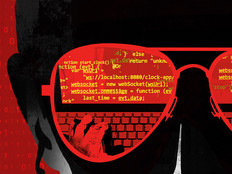NASCIO 2015: States Aim to Adapt Smart Cities Principles
Many IT leaders have heard of smart cities, but the concept isn’t limited to local government. States and the federal government also have areas ripe for transformation, including corrections, healthcare, public safety and human services, notes William Eggers, a public sector research director for Deloitte Consulting.
Indeed, 76 percent of states are in the early stages of exploring smart technology, and 34 percent are actively planning initiatives, according to an audience poll at the NASCIO 2015 Annual Conference in Salt Lake City on Monday. CIOs gathered at the event to discuss how they adapt the smart IT lessons learned at the city level.
Illinois CIO Hardik Bhatt has smart cities experience from his previous post as Chicago CIO and after that, leading Cisco Systems’ Internet of Everything initiatives in key global cities such as Barcelona, Copenhagen, Dubai, Hamburg and Rio.
“States are going to play a very critical role even when it comes to smart cities,” said Bhatt. “It’s not just about sensors, it’s about using the fundamental technologies, analytics and mobile platforms.” He added that Illinois court systems and prisons are in dire need of becoming technologically smarter and more efficient.
Data Deluge
Smart states go well beyond sensors that change stoplights or dim street lighting based on traffic patterns, said Salt Lake City CIO Bill Haight. The key is synthesizing data. He noted that by 2020, there will be some 50 million connected devices feeding bits of data about air quality, traffic patterns and power utilization in server rooms, for example.
“When we look at all the information that’s coming in, it’s absolutely imperative to make that information open, transparent and available,” said Haight. The goal is for citizen developers to seize these data stores from many different sources and manipulate that information to devise products and services that government hasn’t yet conceived.
Jurisdictional boundaries are meaningless to citizens, noted Bhatt, who lives near the intersection of Chicago, Lincolnwood, Niles and Skokie. “To me, it doesn’t really matter if I’m driving in Chicago, Lincolnwood or Skokie, I want my streetlights to work.”
By adopting smart technology, governments at all levels can help keep the lights on.
Keep up with all of our NASCIO 2015 coverage here.








